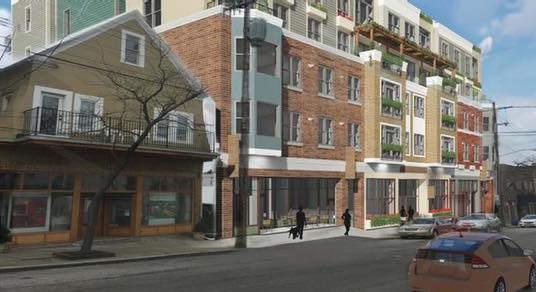
When development occurs in downtown areas of cities there is little disagreement. Since there are few people living in the areas that are to be developed everyone is usually on the same page. However, that’s often not the case when redevelopment comes to older neighborhoods. In those communities there often are long-time residents who want to preserve the character and flavor of their neighborhoods, something that developers have little regard for.
For the most part, all developers are interested in is one thing: profit. Neighborhood integrity and preservation is for residents to protect, that is, if they have the wherewithal to do so — which is rarely the case. Usually, neighborhood groups simply don’t have the sophistication, organizational structure or financial clout to go up against wealthy developers and win.
This is the scenario currently being played out in Little Italy where developers are getting pushback on their Washington Inn Housing proposal for a 50-unit apartment building that would tear down only a couple of older houses and change the feel of the area. But the feeling among residents — with some degree of accuracy — is that developers would tear down every house built in Little Italy after 1950 and replace them with four-, five- or six-story apartment buildings if they had their way.
And now that neighborhood residents are protesting they are subtly being characterized as racists, old-timers that are afraid “those” people will be moving in. And by “those” I mean blacks in particular. This is grossly unfair. Yes, time was, years ago, most residents didn’t want anyone living in Little Italy who wasn’t Italian. But now Asians (along with some blacks) call the community home without incident.
The councilman for the ward, Blaine Griffin, gave me a tour of Little Italy on Sunday morning, and the number of new apartments and condos recently completed or under construction is astounding. But evidently, developers are still licking their chops for more. Now Blaine is as pro-black as they come, and if the residents he represents in Little Italy were primarily concerned with race, he would know it, and he would speak out on it. But that’s just not the case.
This is simply a case of who should determine what kind of community they live in, local residents or developers, who almost always live somewhere else. If there are unintended consequences that occur because of their desire to turn a buck, oh well. They’ve got their money and are long gone by the time the shit hits the fan.
Here in Hough, we’re dealing with another kind of outsider. The Dunham Tavern Museum is now part of Ward 7 (Hough) no matter how their board feels about it. We’ve known for years that if the whole shebang could be picked up and moved to Hunting Valley it would be long gone. But it can’t — they’re stuck here, like it or not.
Nonetheless, one or two members of the board of Dunham think they should determine what gets built along the 66th Street corridor that runs north from Euclid Avenue (where the museum is located) past my home, the vineyard and winery we operate, and past the Fatima Family Center and League Park on Lexington Avenue.
The Cleveland Foundation has proposed building their new headquarters at 66th and Euclid, adjacent to Dunham, which would be a real boon to the community. Nonetheless, one or two board members have gone to court to block it. I have to suppose they are doing this because they know what’s better for us black folk here in Ward 7 than we do.
Does this shit ever end?

From CoolCleveland correspondent Mansfield B. Frazier mansfieldfATgmail.com. Frazier’s From Behind The Wall: Commentary on Crime, Punishment, Race and the Underclass by a Prison Inmate is available in hardback. Snag your copy and have it signed by the author at http://NeighborhoodSolutionsInc.
One Response to “MANSFIELD: Preserving Neighborhoods”
Steven McQuillin
I like the idea of the Cleveland Foundation moving to Midtown, but do they have to builds a new structure on existing valuable open space? Why not rehabilitate one of more fine but deteriorating landmarks in the neighborhood for their new headquarters. Similar non-profits in Warren and Mansfield have done this, to the great benefit of their communities. Why not Cleveland?